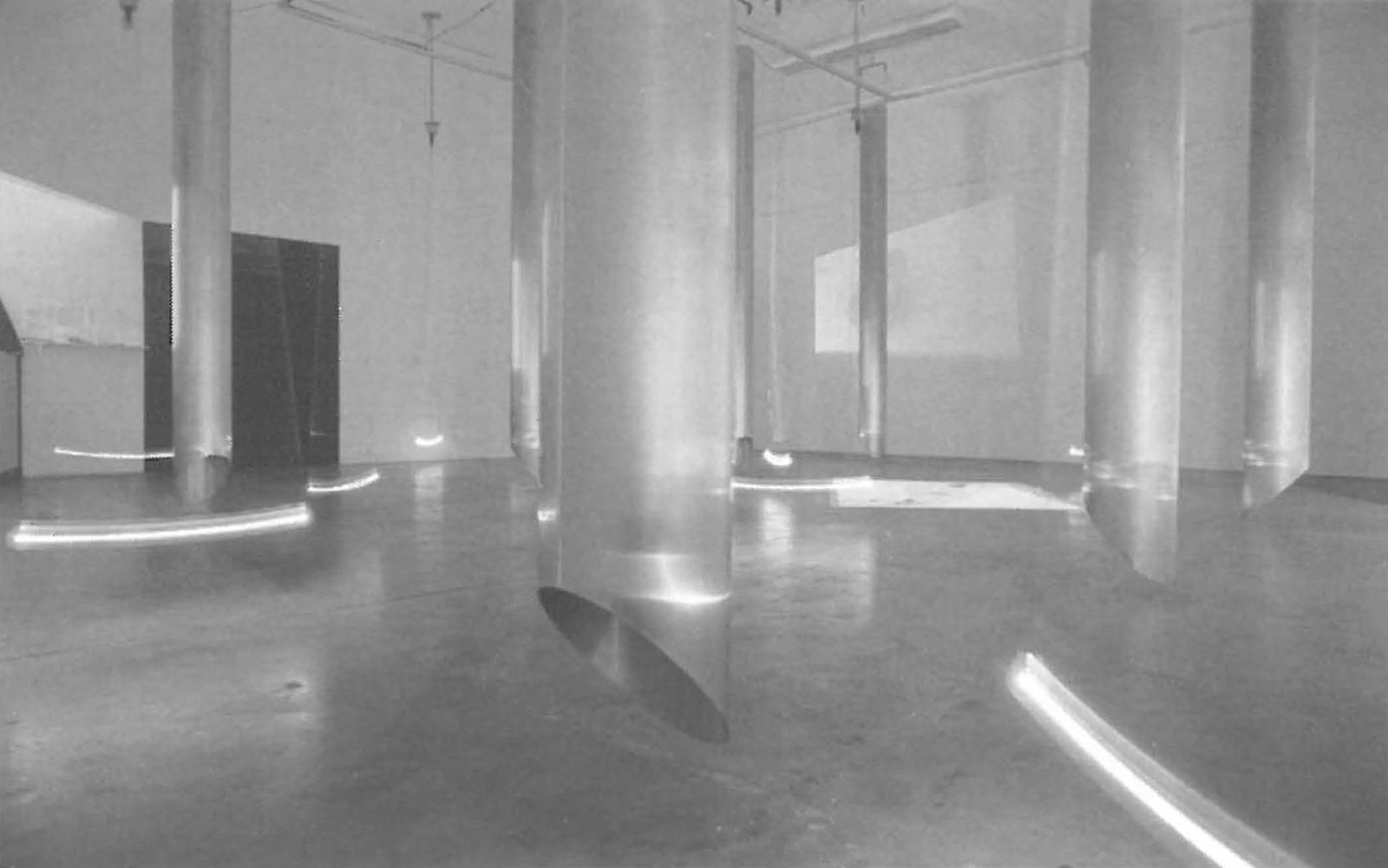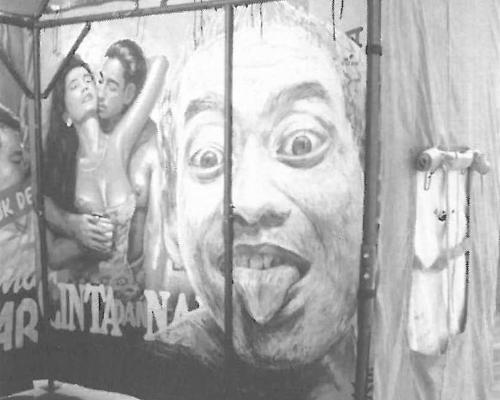
A strong feeling of religiosity emanated from this installation at the Art Museum (and as it turned out Buddhism is mentioned in the catalogue). The whole comprised twelve swinging lights on long metal tubes, sounds of chanting voices piped from seven cylindrical tubes of floor to ceiling height, dull lighting and words and sentences broken up both aurally and in letters on metal panels mounted on the walls in grids of eight. Lucy Guerin danced in images projected onto the floor and wall, focus was placed on images of wrists and arms twisting and bending in uncomfortable and arhythmical movements. It was evident that the work was striving to look beyond the familiar in each of these art forms.
This work has sprung from an in-depth look by Joe Felber and his collaborators at Ad Reinhardt's Black Paintings of the 50s. Ad Reinhardt (1913 - 1967) was an artist whose works from the 1930s onwards were completely abstract, finally reaching an all-black state. From 1960 onwards his works were symmetrically trisected both verticaly and horizontally and painted in near blacks with underlying geometrical structures only just visible.
Although the springboard for this work is around forty to fifty years old it confirms that the historical "...can be fortuitously congruent in contemporary work." as pointed out by Peter Cochrane, at the History Conference at the National Library in Canberra that I recently attended. In 25 Songs three artists have produced a new work responding to an older work showing once again that "...there is no before or after in culture ...only now", a relevant comment made at the same conference by Greg Denning, a historian deeply interested in the performative.
Words and sentences are broken up on metal panels, the dancer's movements are contorted, attempting to break from known or expected movements, sounds are chanted and non rhythmical ... these works are reflections on Reinhardt's work where chance and the elimination of evidence of the personality was an important part of the goal.
Felber claims to want to achieve a "new hybrid interpretation" of the 25 Lines of Words on Art Statement., Reinhardt's work of the 1960s. Felber has had an interest in the connections between John Cage and Marcel Duchamp and ways in which their work had similar links to the work of Reinhardt. Cage was seen as the aural Duchamp, and both Cage and Duchamp had an interest in Buddhism which teaches the elimination of the "I". Cage worked with ever-increasing restrictive rules and attempted to remove the personality of the composer from the music. Collaborations such as that between John Cage, Merce Cunningham and Robert Rauschenberg conjoined sound, dance and painting.
There is value in re-viewing influential movements in art and through this extremely technically accomplished project we are able to reflect once again on Reinhardt's contribution through his core themes of 'negation', 'nothingness' and 'transcendence'.












